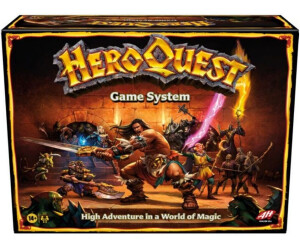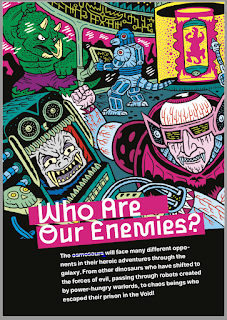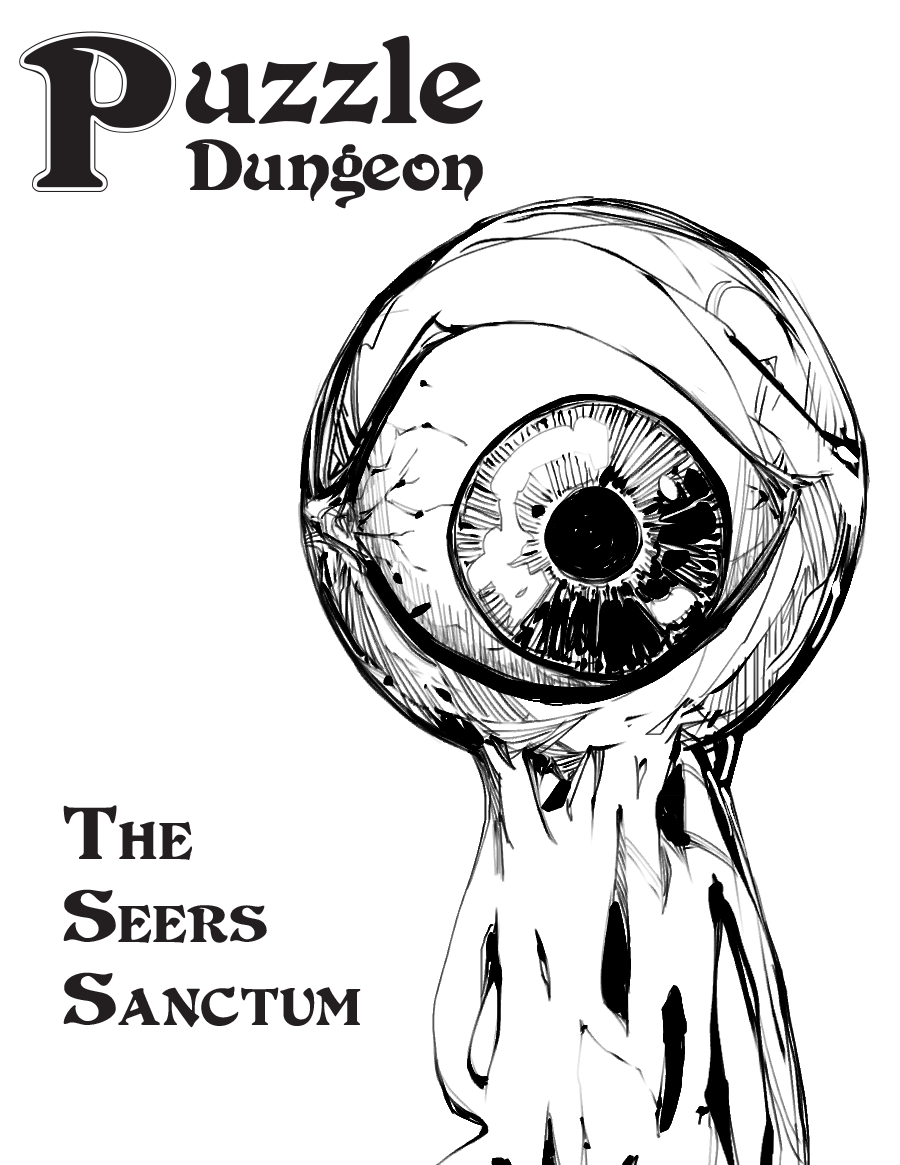Ruins of the Undercity is a small book written by Kabuki Kaiser. It was released in 2013, when the OSR was still relatively young: Labyrinth Lord was 5 years old and basically the go-to OSR system. It is a very faithful restatement of BX D&D, and almost 100% compatible with its most popular today's equivalent: Old-School Essentials.
Ruins of the Undercity is, in many ways, similar to more recent hits like The Stygian Library: in a nutshell, a procedurally generated dungeon adventure.
Why am I reviewing this ten years after release? Basically because it fell into my hands while sorting out my bookcase. I must have bought the POD book somewhere around 2013-14 and remember using it both solo and with my group, and I believe it to be one of the lost gems of the early(ish) OSR scene.
So what is it? RotU is, in the author's words, "a huge randomly-generated adventure spanning a full campaign and backdrop setting", that you can play solo and DM-less.
The book. My POD RotU is a digest-sized (A5), softcover, 70 page, black and white book. About six or so art pieces can be found inside, and the text is very clearly formatted and easily readable. I have no idea if my POD book was from dtrpg (the option isn't there anymore) or from Lulu.
What is it about? The adventure inside the book is a virtually endless, randomly generated megadungeon structure, designed to support characters from level 1 to somewhere between 10-14. The dungeon itself is an endless complex of ancient ruins that can be found under Cryptopolis, a thriving desert city ruled by merchants and priests.
It is the type of dungeon everyone in the city knows about, with lots of possible entrance points, and with a constant flux of aspiring adventurers going in, and a few lucky ones coming out alive. A great setup to get to the dungeoning and adventuring in no time.
Breakdown of the Book. After a brief introduction, the books gets you going with a one page background of the city and the dungeon. This is really good. In six paragraphs, it succeeds in painting the big picture and setting the tone and the players' expectations: a trade city the desert; a city of beggars, rascals, and corrupted merchants and priests; the city's main cult, based on an ancient goddess whose colossal statue was found in the underground ruins; the first explorers of the ruins who turned to liches long ago, and now dwell somewhere down deep. Very few elements, but all of them have some sort of connection with the dungeon. Very good!
Next is two pages of instructions to play solo/dmless. Basically a series of customizable exploration routines you set for your specific party, followed a double set of procedures to play in the city and into the ruins. These create a main game cycle of city/ruins/city or, in other words: down-time/dungeon/down-time.
Some reviewers have praised the exploration routines and dual game cycle as a great example of how to actually play OSR games. One such comment can be found on the reviews section on dtrpg.
The In the City section (12 pages) is pure gold. It gives instructions to mark the passing of time as the party tries to find equipment, hire henchmen, and possibly step into random city events and encounters. This three sections are brilliant because they make an excellent job of painting the picture of this desert city. Instead of a generic equipment list, you have 20 different shops, temples, and guilds offering different types of wares and services. So you don't just buy a scimitar: you visit "the curved shop" (which only sells curved blades), and while you're there you may also check if they have a magic weapon for sale. Next, you can visit "Sifforn's Bows", "The House of the Pole" (selling wooden poles, iron poles, pole weapons, and also pole dancer services!), "The Caravan Market", "Zavbira & Lobellia" (who only sell elegant clothes), "The Cloak and Dagger", "House of the Roper". There are also a temple and a magicians' society, and both offer exclusive services to special members. After that, the magic items that might be available for sale are described: four different pairs of magic babuschs, three different magic turbans, four magic weapons (daggers and scimitars). Finally, the henchmen paragraph describes the available types: men-at-arms, veterans, nomads, elves, dervishes, and scoundrels. Again, the desert-city-theme is coherently reinforced.
In short: the shops, services, and henchmen descriptions already help set personal goals for your character before you even start your first delve. And they do that while just being little more than a series of lists.
The Into the Ruins section (23 pages) is the core of the book. It gives instructions to finally get you to into the megadungeon. You get a set of six starting areas, and then a plethora of tables: area types, door types, illumination, corridor types & features, random items found, special corridors, room structure, special areas, room features, room contents, treasure types, containers, and traps, stair landing types, magic effects, gems, jewelry, and a matrix for monster encounters which sends you to 10 different monster tables based on encounter level. That's a lot of tables!
This section has several merits but also flaws. What's good: again, everything is thematic! Nothing in these tables feels out of place. The monsters are a well-considered selection of classic monsters, plus the FORTY monsters described in RotU in the following section. The environmental details, traps, treasure: everything is coherent. Rolling on the tables gets you exactly the dungeon contents that you would expect from the premises of the book. What I dislike: basically two things. First, too much rolling! You'll proceed in 10-minutes turns in real time, because of so much rolling. Second: if you play this as intended (i.e.: rolling the dungeon live as you play) results will often be underwhelming, leaving you with a sense of having wasted your time rolling dice for nothing really, when the results give you details that offer nothing to play with. Knowing about the shape of the columns, is just not worth another roll, as it will probably be a useless detail.
And this leads to the broader issue of how randomly generated content often suffers from a lack of interconnectedness and meaningfulness. RotU has a lot of broad interconnections, but unfortunately fails at its main goal: consistently creating an engaging dungeon delve, if evaluated by today's standards of theOSR adventure critique. When you roll a new room or corridor, you'll find details that feel like clues, but are not. They are general clues of the global environment, but there will never be any kind of foreshadowing (or telegraphing) of nearby hazards or opportunities. I did play a few sessions of RotU years ago, and this flaw was evident.
Fixing this would have required a completely different design approach of the generation procedures. Again, The Stygian Library comes to mind as an example of "less rolls, more useful results". I tried my hand at this too, with the Gold & Glory dungeon generators.
Another issue I have with this section is that the encounter generation matrix computes the party level into the types of encounters. This means that a level 1 party enters a manhole on the city plaza and finds skeletons, while a level 10 party entering that same manhole will meet terrifying 10+ HD monsters. In other words: dangers and treasure are dictated by the party's average level, not the dungeon level, so the traditional megadungeon structure and philosophy ("go deeper to find bigger treasure") is not here. The generators will produce "a dungeon adventure suitable for your current party level".
The Fiends of the Ruins section (16 pages) introduces 40 "new" monsters. I'm not an expert here, but I feel some of them are new with reference to the Labyrinth Lord bestiary, but are not completely original. Anyway, they are nice, thematic (again...), and those with a variety of powers of spells include a "tactics" paragraph. Nice.
The book ends with some extra tools, tables and an appendix: a table to thematize the treasure maps that can be found as treasure, and make them functional with the Undercity dungeon; there's also four powerful artifacts; and a final appendix with post-delve events and a series of nine possible longterm personal goals for the player characters, including becoming a high priest of the Goddess, a member of the city's council, a city hero, or even a lich. This section, like others before, is great: lots of ideas, interconnectedness, and thematic coherence. And for each goal there are clear instructions on how to achieve it. Perfect for both traditional and solo/gmless play.
Final considerations... All in all I cherish my PoD RotU book. It's a piece of my personal hobby history, and it was one of the inspirations for my Gold & Glory series. I cannot say I would recommend using it as intended (i.e. to generate the dungeon as you play), with or without a gm. But, if you think you like the general premise of vast ruins under a desert trade city, I definitely recommend giving it a shot as a "thematized dungeon preparation toolkit": i.e. as a set of tools and tables to generate your Undercity dungeon before playing. Used like this, you may decide which tables to skip, which to roll on, and which to choose results from instead of rolling; you may decide to completely skip the map generation tables and simply use Dave's Mapper to instantly generate endless maps, or grab some of those amazing Paratime Design maps; you may decide to use the encounter matrix as is, and thus create dungeon adventures balanced for a given party level, or you may "cheat" and use the encounter matrix to create a 10+ levels megadungeon by simply considering party level 1 for dungeon level 1, party level 2 for dungeon level 2, and so on.
...and hopes? Despite its flaws, I must say I'm fond of RotU. I hope Mr Crespy will someday consider creating an updated, upgraded edition (possibly an Old-School Essentials version?), to bring the mysteries of Cryptopolis and the Undercity back on a thousand gaming tables.
----
Into OSR? Check my other OSR posts!














.jpeg)
.jpeg)

.jpg)

.jpg)




















